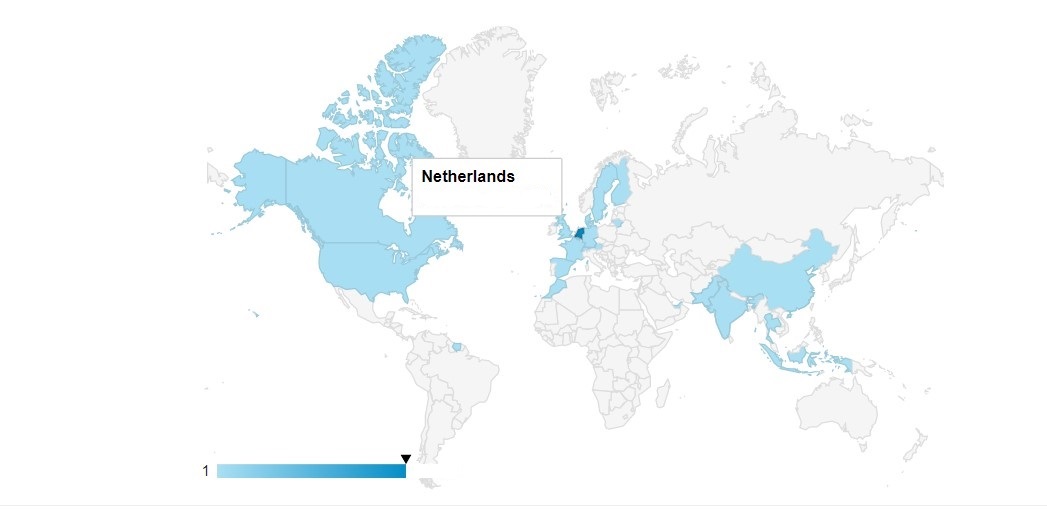How your website is visited
The way a website is visited is an important factor in choosing advertising platforms, offering your services and content, and setting strategies. So analyzing your website's results is important for many different reasons. Let's take a look at how you can do this and what it depends on.
Over time, most webmasters will want to know where their visitors are coming from, whether they are finding what they are looking for, and how they are experiencing the site. With some smart tools, this can be tracked and collected. And of course, to use this to your advantage, the goal of every webmaster is to get more visitors and conversions. This is how you can grow as a website and as a business. Even if you are only targeting traffic through advertising. It is still extremely important to determine what is working and what is not.
How can you track this?
There are a number of ways to do this, two of which we can recommend. And these come from the two major technology companies, Microsoft and Google. With these two tools, you can anonymously track almost everything about your users and visitors to your website. With these tools, you can make sure that you get all the information that you need, and that you can always access reports and more to get things in order for yourwebsite hosting. The two tools in question are Microsoft Clarity and Google Analytics, both of which have been covered in detail in previous blog posts.
These two tools are easy to use and will give you almost all the information you want about your visitors. With the default settings, your visitors' privacy is still maintained. However, you still need to make a cookie call to agree to this.
What does a large number of users of a particular resource tell you?
A large number of users of a resource is often an indication that your work is paying off - think of a post on social media that is frequently picked up and shared. A link from a popular forum. Or that you've been mentioned in the news, received an email link, or been shared further and risen in search results. An increase from an unexpected or expected source can also lead to you seeing more conversions from a particular landing page.
Landing pages are often a great way to promote a campaign or find out where your visitors are coming from. For example, with a specific discount code or cookie, it's often possible to see what's coming from where. It's also possible to promote a social media channel with a special landing page. For example, a special promotion page for Facebook or Instagram. This way you can see what the interaction is like with a specific audience.
Track direct traffic
Sometimes it's still a challenge to figure out direct traffic, but you can see what the landing page of that traffic is. Then you can roughly estimate where that traffic is coming from. You can also check to see if the same page is being visited via social media. Often, you can already see where they're coming from. You can also always use Google to search for mentions of that page minus your own website. Then you can see how and where people are linking to that page.
Direct traffic is often traffic that comes directly to your site or from where it can't be tracked. I've personally seen this a lot on social media on Reddit. If no source can be added immediately.
Tracking screen size and operating system.
Tracking screen size and operating system is also often an important indicator of where traffic is coming from. And can be used to advertise more to desktop users using Mac, Windows or Linux. Or mobile devices running Android or Apple IOS. If you see a difference in bounce rate from these sources and conversion rate, you can always invest more time and effort in optimizing content for these sources or advertise on these mediums.
How do these different users behave?
The behavior of different users can be easily viewed and analyzed in both Microsoft Clarity and Google Analytics for optimization. For example, if you notice that mobile users are bouncing quickly, you should first look at how your website performs on mobile devices. For example, is the load time slower, do the images take up too much space on a mobile screen, or is the content not broken down in a bite-sized way? A lengthy text may cause a higher bounce rate than shorter texts.
This behavior can be analyzed and categorized by operating system, source, country, landing page, etc. There are many factors to consider to benefit from this.
Optimize for a specific traffic flow
Of course, it's nice to know where most of the visitors to your website or a particular page are coming from, but doing something with it is the second question. That's why it's important to look at what has worked in the past and how you can apply that to your future promotion or post. Of course, don't try to copy this blindly, but reproduce it in a similar way. For example, adapt the same styling for your image, write the content in the same style and look at what else made an impact in that post, article or product promotion you applied. This will ensure that you can replicate this in a natural way. And once again, take advantage of it.
Want to learn more tips and tricks about websites, internet marketing and SEO? Follow our blog on social media and achieve success together with your website at MijnHostingPartner.nl!
